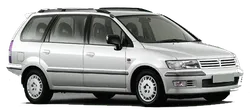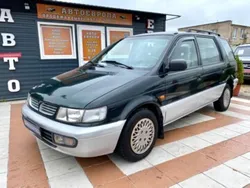

Mitsubishi Space Wagon Generations Overview
Explore the Mitsubishi Space Wagon models, including typ N30 and N40. Discover features, specifications, and history in Portugal, focusing on Mitsubishi Space Wagon's innovative design.
The Mitsubishi Space Wagon Typ N30/N40 is a car model generation that made its debut in 1983 and remained in production until 2003. This spacious and versatile vehicle was designed by Mitsubish...
Technical Specifications
Select Version
Dimensions
Engine
Driving
Others
History and Features
Mycarro AI
Feb 1, 2024
Introduction
The Mitsubishi Space Wagon Typ N30/N40 is a car model generation that made its debut in 1983 and remained in production until 2003. This spacious and versatile vehicle was designed by Mitsubishi Motors, a renowned Japanese automaker. With its unique blend of comfort, reliability, and practicality, the Space Wagon quickly gained popularity among families and individuals looking for a capable and spacious car.
Design and Features
The Mitsubishi Space Wagon Typ N30/N40 boasted a sleek and modern design that was ahead of its time. The exterior featured clean lines and a streamlined shape, giving it an appealing and contemporary look. The spacious interior offered ample headroom and legroom for both the driver and passengers, making long journeys comfortable for everyone.
One of the key features of the Space Wagon was its versatile seating arrangement. The rear seats could be folded down or removed completely, allowing for flexible cargo space configurations. Whether you needed to transport a large load or accommodate passengers, the Space Wagon could adapt to your needs effortlessly.
Performance and Engine
The Space Wagon Typ N30/N40 was equipped with a range of reliable and efficient engines. The petrol engine options included a 1.8-liter and a 2.0-liter engine, offering a balance between power and fuel economy. For those seeking more power, a turbocharged diesel engine was also available, delivering excellent torque for an enhanced driving experience.
The car's performance was further enhanced by its well-tuned suspension system and precise steering, ensuring a smooth and controlled ride. The Space Wagon's handling characteristics were commendable for a vehicle of its size, making it easy to maneuver both in city traffic and on the open road.
Safety and Technology
During its production years, Mitsubishi prioritized safety in the Space Wagon Typ N30/N40. The car featured front airbags for the driver and front passenger, providing an added layer of protection in the event of a collision. Additionally, the vehicle was equipped with anti-lock brakes (ABS) and traction control, further enhancing its safety credentials.
In terms of technology, the Space Wagon offered a range of features for its time. These included power windows, an audio system, air conditioning, and electrically adjustable side mirrors. These features contributed to delivering a comfortable and enjoyable driving experience for both the driver and passengers.
End of Production and Legacy
After two decades of successful production, the Mitsubishi Space Wagon Typ N30/N40 ceased production in 2003. Despite its discontinuation, the car left a lasting impact on the automotive industry. Its spaciousness and versatility set new standards for mini-vans, inspiring future generations of family-oriented vehicles.
The reliability and durability of the Space Wagon ensured that many of these vehicles are still on the road today. Its reputation for practicality and longevity has created a dedicated community of enthusiasts who continue to appreciate and maintain these iconic vehicles. The Space Wagon Typ N30/N40 has thus cemented its place as a classic model in Mitsubishi's history.
Conclusion
The Mitsubishi Space Wagon Typ N30/N40 proved to be a frontrunner in the mini-van segment, offering a perfect balance between comfort, reliability, and practicality. Its sleek design, versatile seating arrangement, and range of engine options set it apart from its competitors. With its emphasis on safety and modern technology, the Space Wagon was a true representation of Mitsubishi's commitment to delivering high-quality vehicles. Although production has ended, the Space Wagon's legacy continues to thrive among car enthusiasts and remains a testament to Mitsubishi's engineering excellence.
